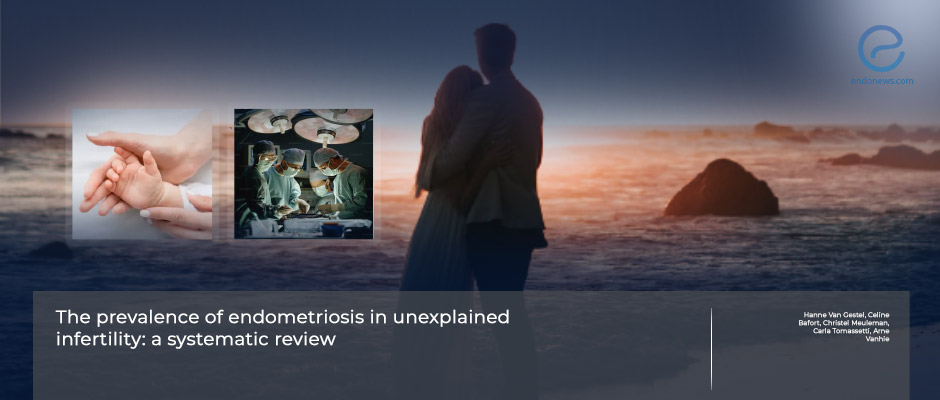Endometriosis Prevalence High Among Women With Unexplained Infertility
Aug 14, 2024
Almost half of women with unexplained infertility have endometriosis.
Key Points
Highlights:
- The prevalence of endometriosis among women with unexplained infertility remains high.
Importance:
- Decision-making in patients who also have pain suggestive of endometriosis is important.
What’s done here:
- This study is a systematic review of the literature to investigate the prevalence of endometriosis among patients with unexplained infertility.
Key results:
- Forty-four % of women with unexplained infertility have endometriosis.
- The prevalence of tubal factors and adhesions are 20% and 16 % respectively.
- The detection rate of pelvic abnormalities is higher among women who previously had fertility treatment.
Limitations:
- Only 4 studies provided information about pain symptoms in patients undergoing laparoscopy making it impossible to draw any conclusions about the prevalence of pain symptoms among patients with unexplained infertility.
Lay Summary
The prevalence of endometriosis and tubal abnormalities is still high among patients with unexplained infertility, according to a new study published in the scientific journal Reproductive BioMedicine Online.
“The high prevalence of endometriosis in this population is important for decision-making in patients who also suffer from pain symptoms suggestive of endometriosis,” the authors of the study said.
To investigate the prevalence of endometriosis among patients with unexplained infertility who undergo diagnostic laparoscopy, a team of researchers led by Dr. Arne Vanhie from Leuven University Fertility Centre, Department of Gynaecology and Obstetrics, University Hospitals Leuven and Laboratory for Endometrium, Endometriosis and Reproductive Medicine in the Department of Development and Regeneration, Group Biomedical Sciences at Leuven University in Belgium conducted a systematic review of the literature.
They found that the prevalence of endometriosis was 44% among patients with unexplained infertility undergoing diagnostic laparoscopy. Most lesions (74%) were classified as minimal or mild. The prevalence of tubal factors was 20% while that of adhesions was 16%.
The detection rate for pelvic abnormalities was higher among women who previously had fertility treatment at 75% compared to women without at 53%.
“Despite the significant improvements in imaging for the diagnosis of endometriosis and tubal factors over the last decades, the prevalence rates of endometriosis and tubal abnormalities remain high in patients with unexplained infertility,” the researchers concluded. “Further research is needed on the prevalence of pain symptoms in patients with unexplained infertility, and the role of diagnostic laparoscopy in this population from the combined perspective of infertility and pain management”.
Research Source: https://pubmed.ncbi.nlm.nih.gov/38943813/
infertility diagnostic laparoscopy

